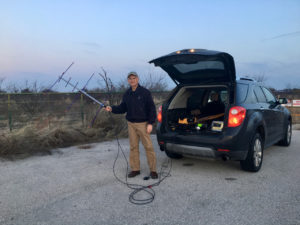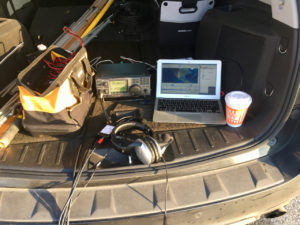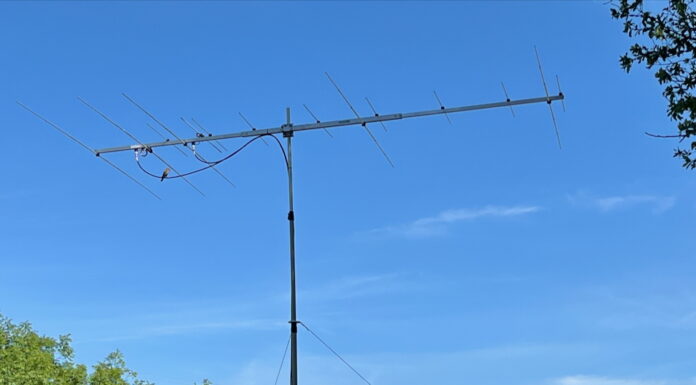Early Morning Kinda Guy
 I like doing the morning satellite passes and then heading back home. For this run, which is about a two-hour drive from home, I was on the road at 4 AM, stopped for breakfast along the way at Whataburger, and arrived about an hour ahead of my first satellite pass of FO-29. That allowed me to get everything set up and actually get on XW-2F where I worked Rick, VE4AMU.
I like doing the morning satellite passes and then heading back home. For this run, which is about a two-hour drive from home, I was on the road at 4 AM, stopped for breakfast along the way at Whataburger, and arrived about an hour ahead of my first satellite pass of FO-29. That allowed me to get everything set up and actually get on XW-2F where I worked Rick, VE4AMU.
The FO-29 pass netted six QSOs including XE1MEX, VE4AMU (again), and the #MastaRova AL6D. What a pleasure it was to give Gabe a grid after he’s provided nearly a hundred for me.
Next was AO-85 where again I put six stations in the log, which included VE4AMU again. Then it was on to CAS-4B with another six stations. And, the last pass was AO-92 with nine stations in the log, but there were a couple of duplicates on that pass.
Total QSOs came in at 28. Not bad for a morning on the satellites and handing out a new grid for many.
Communicating Grid Activations via Twitter @k5nd
I kept people informed of my roving activities on my Twitter account @k5nd. I sure recommend that you get on Twitter and connect with other satellite operators. I’ve been on Twitter for 10 years this month — all the while trying to figure out how to use it. Two years ago I found the perfect use, connecting with satellite operators that I want to keep up with and share activities.
Ham Shack in an SUV
 One of the photos I shared this morning was of my ham shack in the back of the SUV. You can see it nearby. My Twitter post said “Not so lightweight #AMSAT roving.”
One of the photos I shared this morning was of my ham shack in the back of the SUV. You can see it nearby. My Twitter post said “Not so lightweight #AMSAT roving.”
You can see the IC-910H and the MacBook Air. I run MacDoppler to keep me on the right frequency and help me spot the satellite passes. It now has a Heads Up Display of the azimuth that helps too. I also have a very small sound card plugged into the side of the MacBook to feed AudioNote for recording the passes. Then there’s the battery in the tool bag. Not light at all, but it does a good job.
Testing for VHF Contesting
 I was also able to test a 10-element 2 meter yagi in a preview of the rover entry I plan to make for the ARRL June VHF Contest. I do plan to leave the painter pole at home and pick up a fiberglass push up mast. The painter pole bends way too much in the wind.
I was also able to test a 10-element 2 meter yagi in a preview of the rover entry I plan to make for the ARRL June VHF Contest. I do plan to leave the painter pole at home and pick up a fiberglass push up mast. The painter pole bends way too much in the wind.
Thanks to everyone who worked me this morning. I hope you picked up a new grid in the process. Everything is now in Logbook of the World and a few confirmations are starting to show up.
BTW — Just in case you thought I was making up Wizard Wells, here’s the proof.









